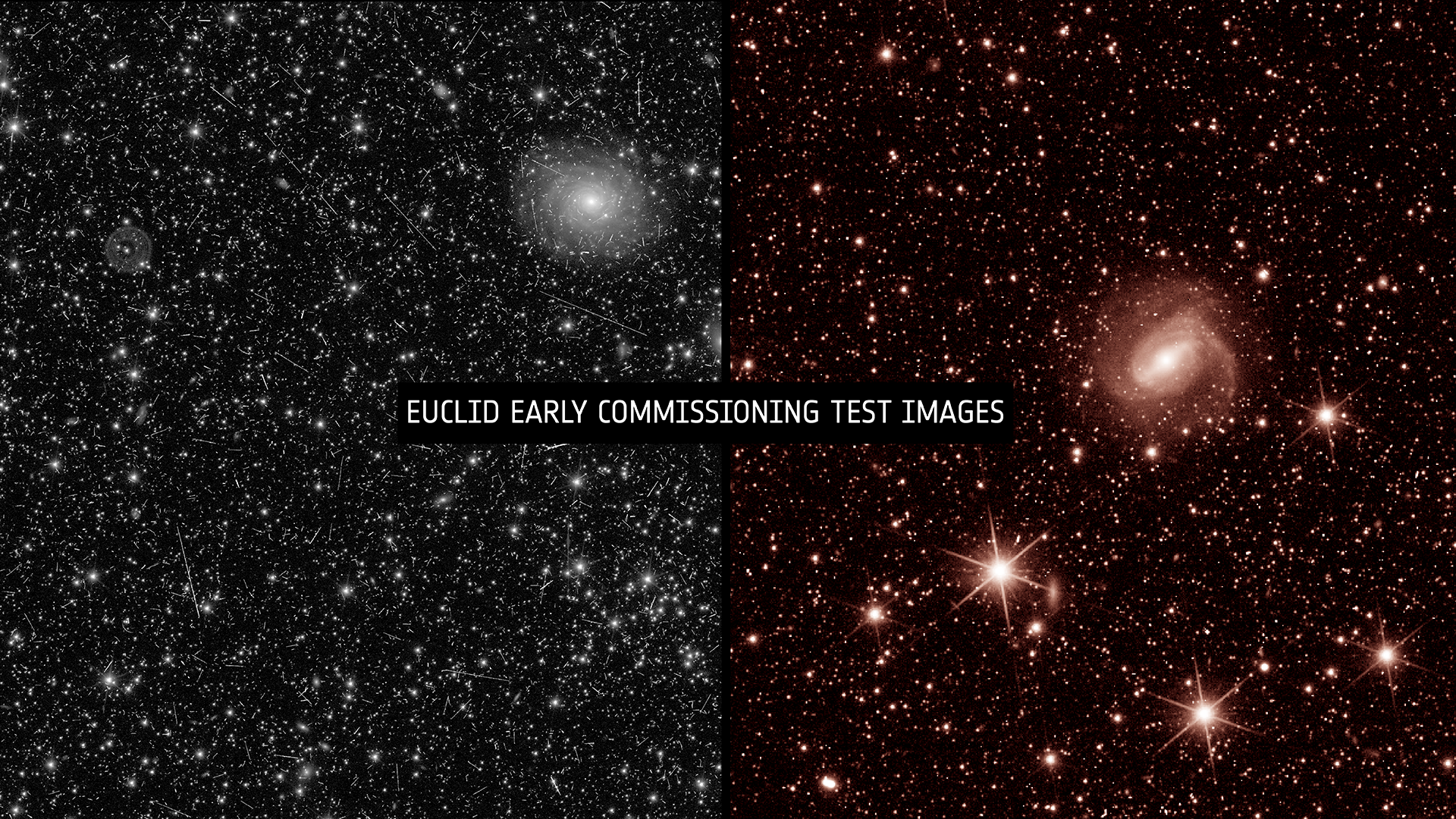Today, the European Space Agency’s (ESA) Euclid telescope will reveal the universe in full color for the first time. The Euclid mission scientists will gather in Darmstadt, Germany, to discuss the telescope’s first five full-color images of the distant cosmos. You can watch the live reveal at 8:15 a.m. EST (1315 GMT) here on Space.com, courtesy of ESA. These images not only hold scientific value but are also expected to be visually stunning.
Launched in July, Euclid is on a six-year mission to study the dark side of the universe. It is currently observing the cosmos from a location about 1 million miles (1.6 million kilometers) from Earth, which is the same distance as NASA’s James Webb Space Telescope.
Related: ‘Dark universe’ telescope Euclid faces some setbacks during commissioning
Euclid’s main objective is to create an innovative 3D map of the dark universe by mapping out the shapes and distributions of billions of galaxies and star clusters up to 10 billion light-years away. This mission aims to provide insights into elusive dark matter and dark energy.
In order to achieve this goal, the telescope is equipped to capture sharp images of large areas of the sky in both visible and infrared wavelengths. Euclid will study weak gravitational lensing, a cosmic phenomenon that occurs when galaxies or clusters of matter align by chance, acting as magnifying lenses for objects behind them. This results in distorted and multiplied light, creating surreal illusions around lensing galaxies.
Scientists suspect that dark matter, which is invisible and comprises a significant portion of most galaxy clusters’ total mass, is responsible for much of this lensing. By studying galaxy clusters, Euclid can provide valuable information about the behavior and nature of dark matter. However, the images need to be incredibly sharp to bring the fuzzy lensed images into focus.



